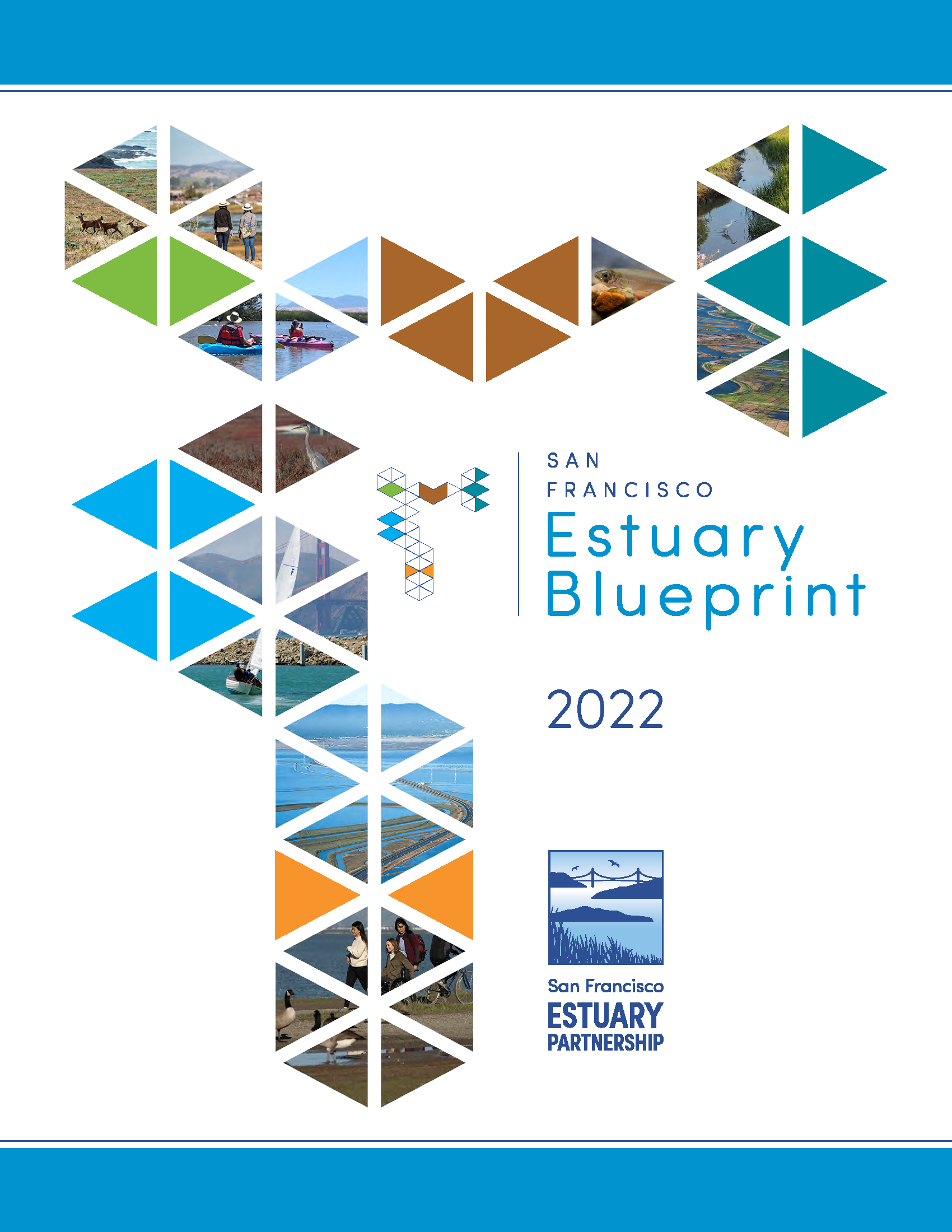Action 19: Stormwater Management
← Back to Estuary Blueprint Actions
Manage stormwater with low impact development and green stormwater infrastructure.
Implement Low Impact Development (LID) and Green Stormwater Infrastructure (GSI) to reduce polluted stormwater to the Estuary. Develop planning and tracking tools, technical materials, policy recommendations, and financing strategy guidance to aid agencies with implementation.
Overview
In cities around the region, impervious surfaces such as streets and sidewalks typically represent 15-25 percent of land cover. Impervious surfaces prevent stormwater from being filtered through the soil, resulting in stormwater runoff that carries pollutants like oil, grease, pesticides, and heavy metals down drains and straight into the Estuary. As climate change brings more extreme weather events to the Estuary, green stormwater infrastructure (GSI) and low impact development (LID) installations can reduce runoff volumes and distribute runoff into inlets across a longer period of time, helping to reduce the impacts of urbanization on local hydrology and water quality.
Task Description
Expand funding opportunities for Green Stormwater Infrastructure (GSI) planning and implementation, including those identified in the Roadmap of Funding Solutions for Sustainable Streets. Expand effort to engage utility agencies that also maintain infrastructure in the public realm to increase collaboration and cooperation.Task Lead(s)
Metropolitan Transportation Commission and Association of Bay Area Governments, San Francisco Estuary PartnershipTask Collaborating Partner(s)
Bay Area Flood Protection Agencies Association, Bay Area Municipal Stormwater Collaborative, California Department of Transportation, ReScape California, San Franciso Bay Regional Water Quality Control Board, Save the Bay, State Water Resources Control BoardCost Estimate Key
|
Cost Estimate
$Milestone(s)
10 stormwater management/transportation planning meetings with Metropolitan Transportation Commission, San Francisco Bay Regional Water Quality Control Board, and others.Task Description
Improve the San Francisco Bay Low Impact Development (LID) Tracker Tool and the process to efficiently receive pertinent GSI project information reported to the San Francisco Bay Regional Water Quality Control Board to increase the number of projects in the Tracker Tool and allow reporting on the cumulative pollutant reduction effectiveness of GSI projects on the water quality of San Francisco Bay.Task Lead(s)
San Francisco Estuary Institute, San Francisco Estuary PartnershipTask Collaborating Partner(s)
Bay Area Municipal Stormwater Collaborative, Metropolitan Transportation Commission and Association of Bay Area Governments, San Francisco Bay Regional Water Quality Control BoardCost Estimate Key
|
Cost Estimate
$$Milestone(s)
A permanent agency home and budget for the LID Tracker Tool with budget for coordination with municipalities and countywide clean water programs, project data compilation and entry, and ongoing software maintenance.Task Description
Pilot an alternative or in-lieu LID compliance Compliance program for San Francisco Bay Regional Water Quality Control Board that demonstrates to municipalities a programmatic approach to alternative compliance that can provide funding for both capital implementation and long-term operations of multi-benefit Green Stormwater Infrastructure, and result in projects that provide a net environmental benefit or equivalent or increased water quality benefit.Task Lead(s)
City of San Pablo, City of Walnut Creek, Contra Costa County, Contra Costa Countywide Clean Water ProgramTask Collaborating Partner(s)
Bay Area Municipal Stormwater Collaborative, San Francisco Bay Regional Water Quality Control Board, San Francisco Estuary Partnership, San Mateo Countywide Water Pollution Prevention Program, U.S. Environmental Protection AgencyCost Estimate Key
|
Cost Estimate
$$$Milestone(s)
San Francisco Bay Regional Water Quality Control Board-approved alternative compliance pilot program with two public projects identified for receiving resources from regulated project proponents.Task Description
Develop a stormwater asset management module within the Metropolitan Transportation Commission’s StreetSaver Program to help Bay Area municipal jurisdictions improve inventory, inspection, and maintenance of storm drain and green infrastructure assets along streets.Task Lead(s)
Metropolitan Transportation Commission and Association of Bay Area GovernmentsTask Collaborating Partner(s)
Bay Area county and municipal agencies, Bay Area Municipal Stormwater Collaborative, San Francisco Bay Regional Water Quality Control Board, San Francisco Estuary PartnershipCost Estimate Key
|
Cost Estimate
$$Milestone(s)
Revised StreetSaver Program that includes a stormwater asset management module consistent with requirements in stormwater permits.Task Description
Task Lead(s)
Task Collaborating Partner(s)
Cost Estimate Key
|
Cost Estimate
Milestone(s)
Task Description
Task Lead(s)
Task Collaborating Partner(s)
Cost Estimate Key
|
Cost Estimate
Milestone(s)
Task Description
Task Lead(s)
Task Collaborating Partner(s)
Cost Estimate Key
|
Cost Estimate
Milestone(s)
Task Description
Task Lead(s)
Task Collaborating Partner(s)
Cost Estimate Key
|
Cost Estimate
Milestone(s)
Updates and Emerging Issues
Since 2016, this Action’s focus has shifted from planning to implementation, with projects being tracked regionally via an LID Tracker Tool, built by the San Francisco Estuary Institute to be compatible with other GIS-based software programs. Additionally, this Action now explores creative ways to fund stormwater infrastructure projects, such as an in-lieu alternative compliance pilot program that would allow cities to get GSI funding from private projects where on-site treatment is infeasible. While the action is focused on the Estuary due to San Francisco Bay Regional Water Quality Control Board requirements and intense urbanization, LID/GSI is an effective strategy in Delta watersheds as well.
Climate Change Considerations
Climate change will bring more extreme weather events to the Estuary, causing periods of drought and periods of intense precipitation. GSI/LID installations can distribute runoff into inlets over a longer period of time, helping reduce flooding caused by overwhelmed stormwater systems.
Equity Considerations
GI/LID techniques often improve community aesthetics and create more pedestrian friendly spaces, which are needed in many underserved communities. However, these projects can also raise property values and lead to green gentrification, further exacerbating displacement in communities already vulnerable to hot real estate markets.
Blueprint Goals
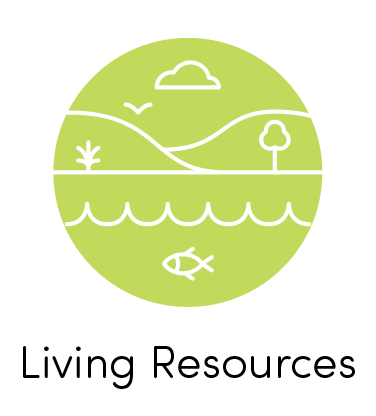
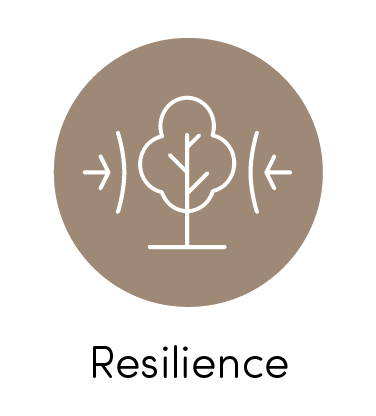
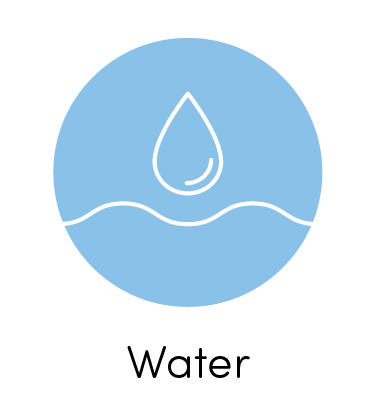
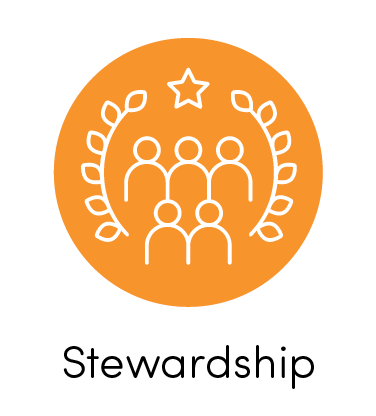
Connections to Other Actions
Watershed connections provide unique habitat and ecosystem services closely related to or dependent upon:
Action 1: Climate Resilience
Action 2: Equity
Action 3: Adaptation Planning
Action 4: Adaptation Implementation
Action 18: Recycled Water
Action 20: Nutrients
Action 21: Emerging Contaminants
Action 22: Health Risks of Contaminants
